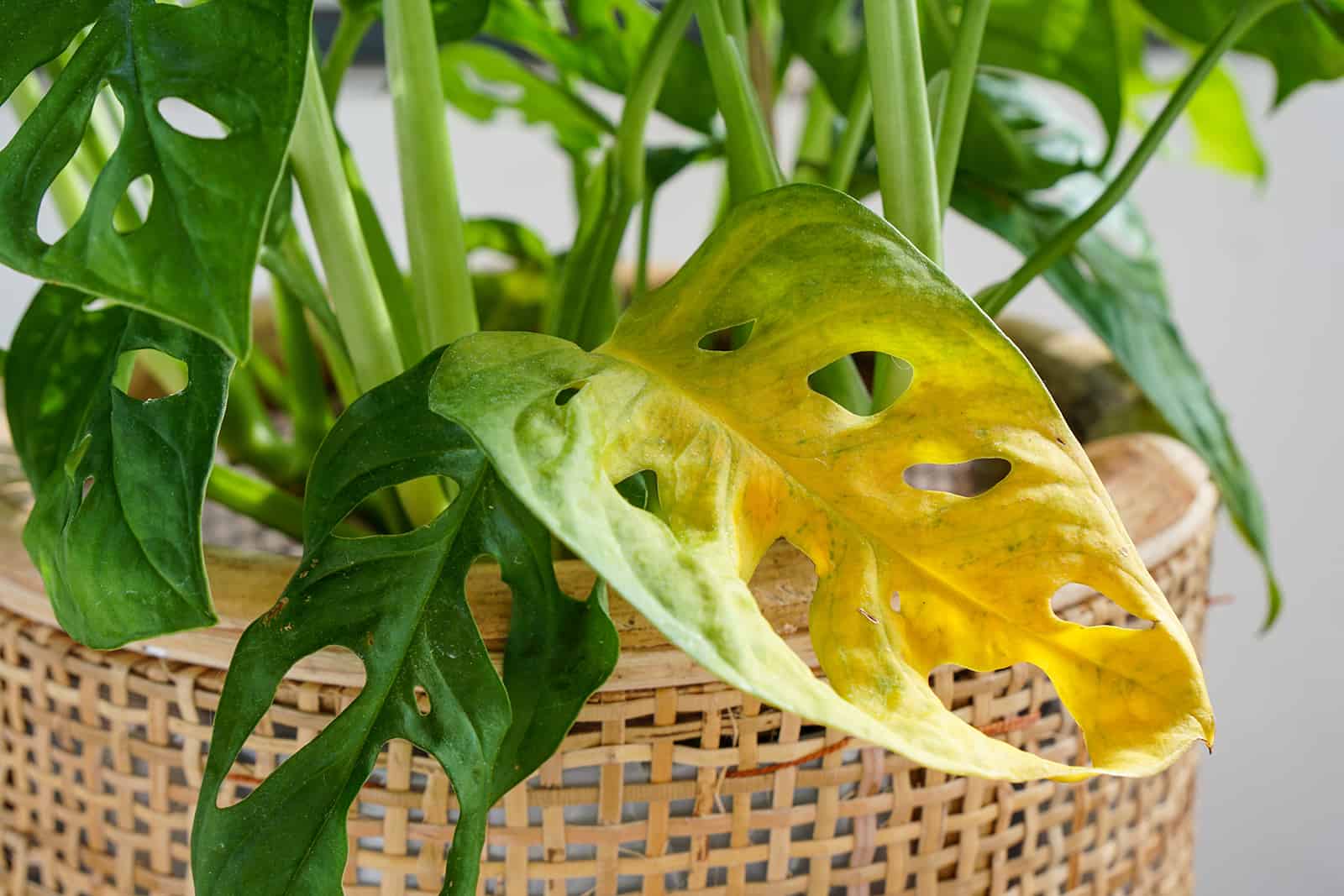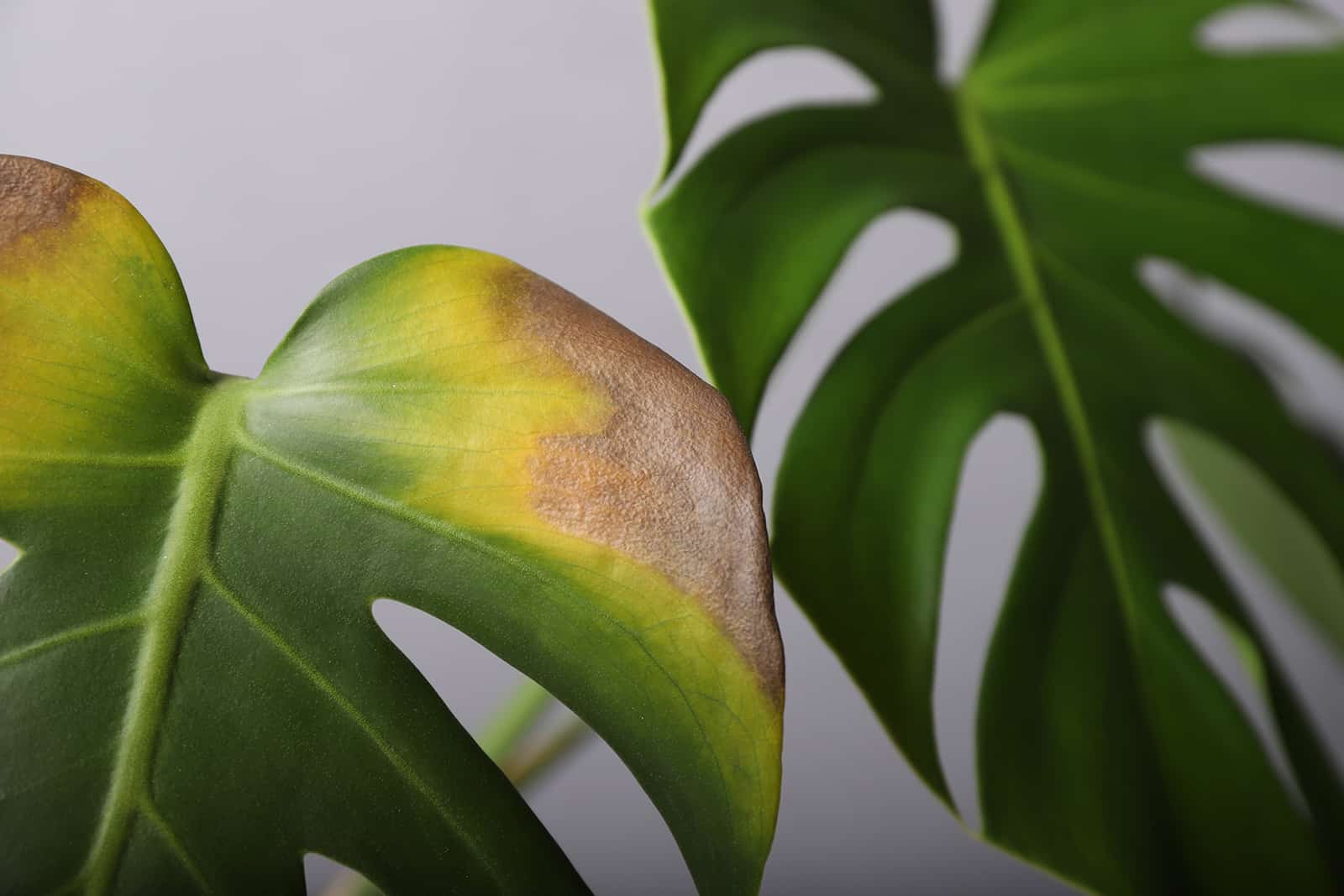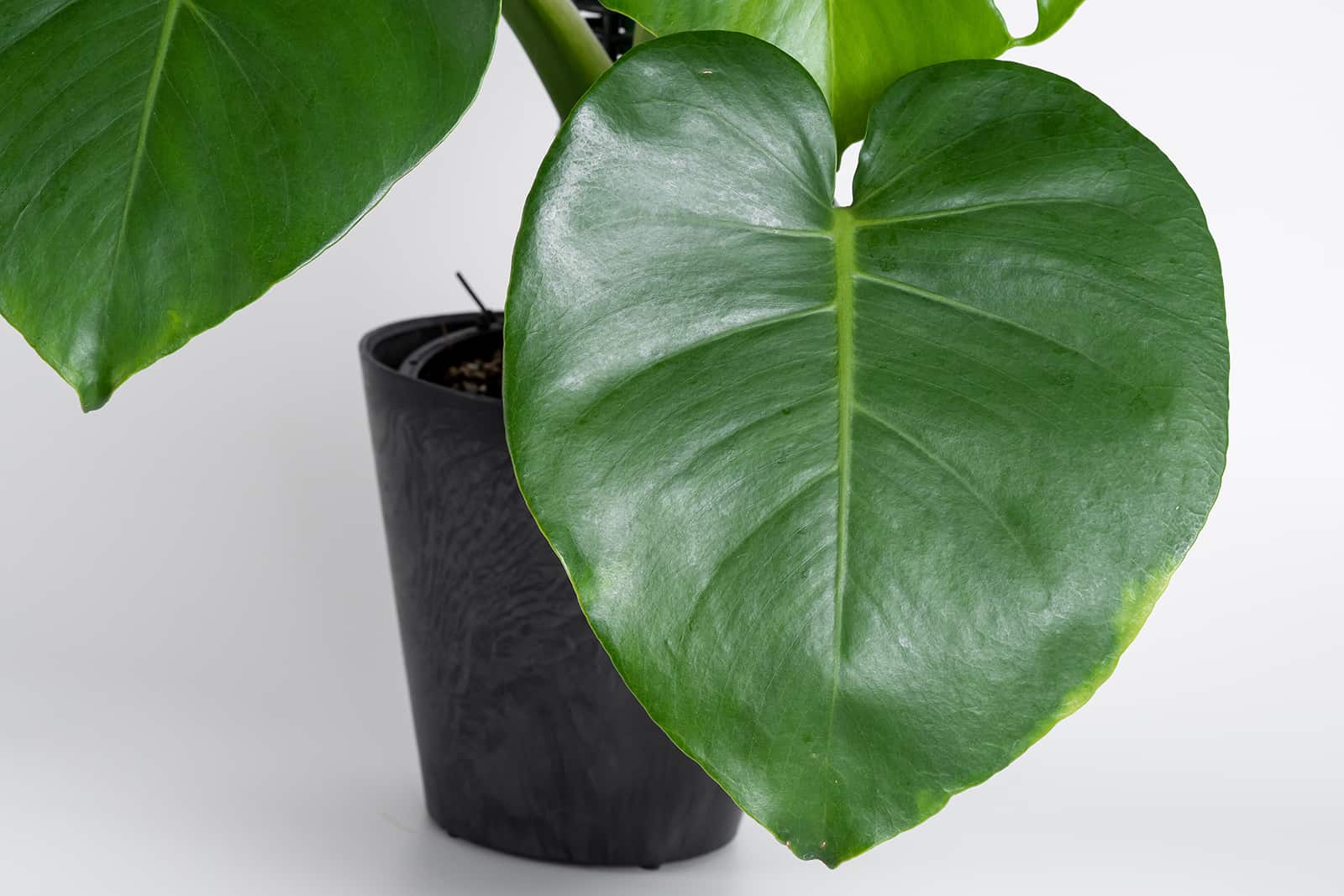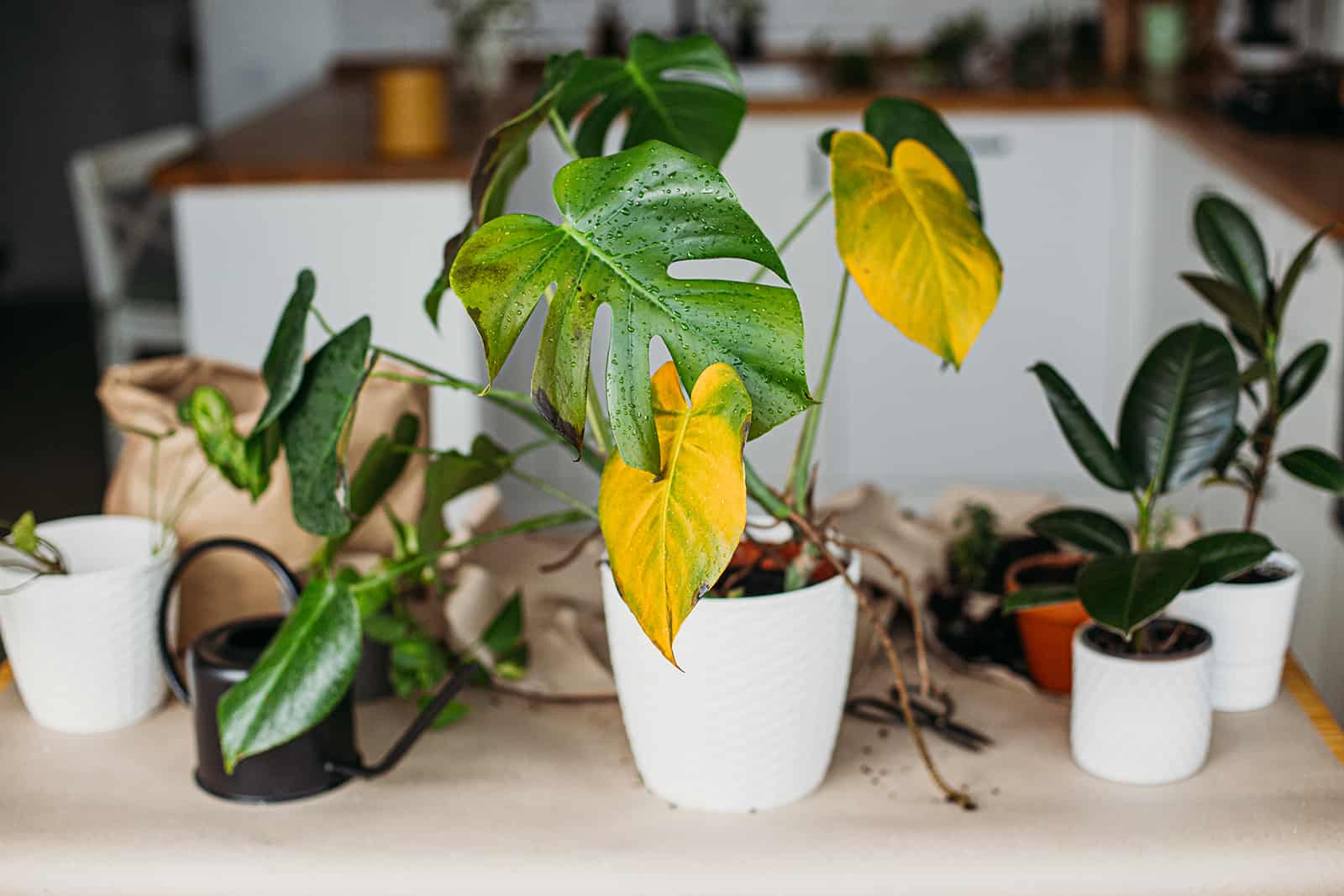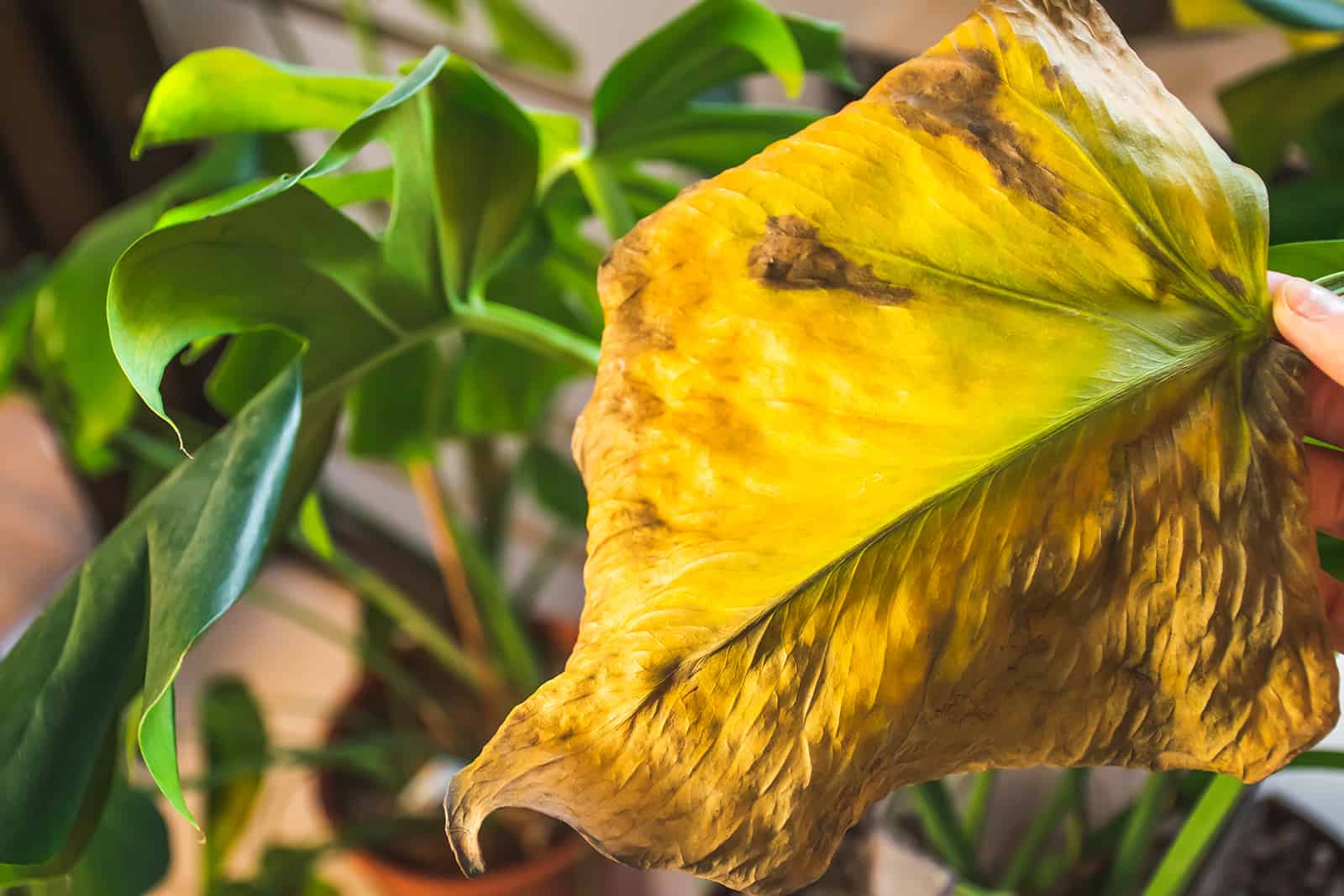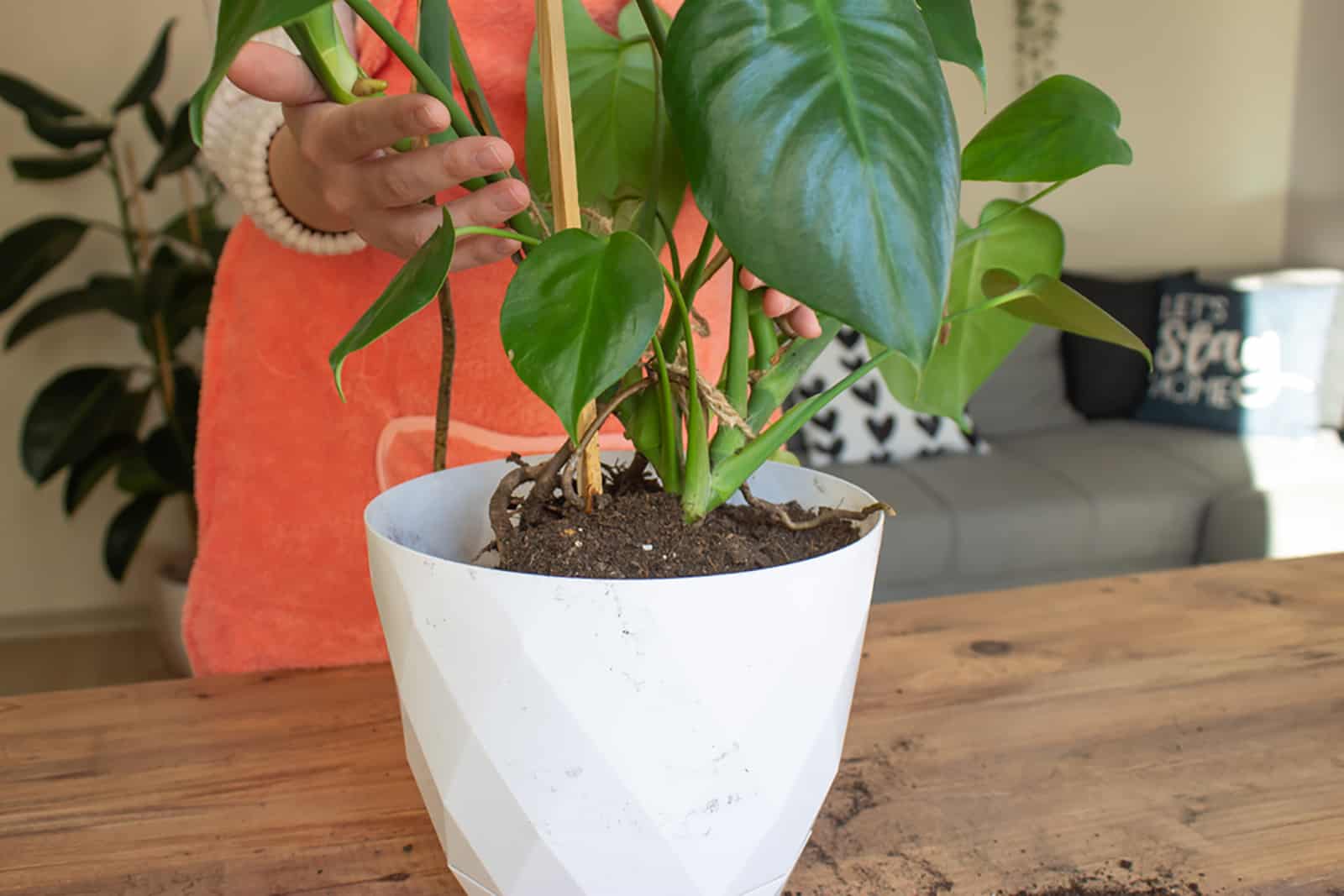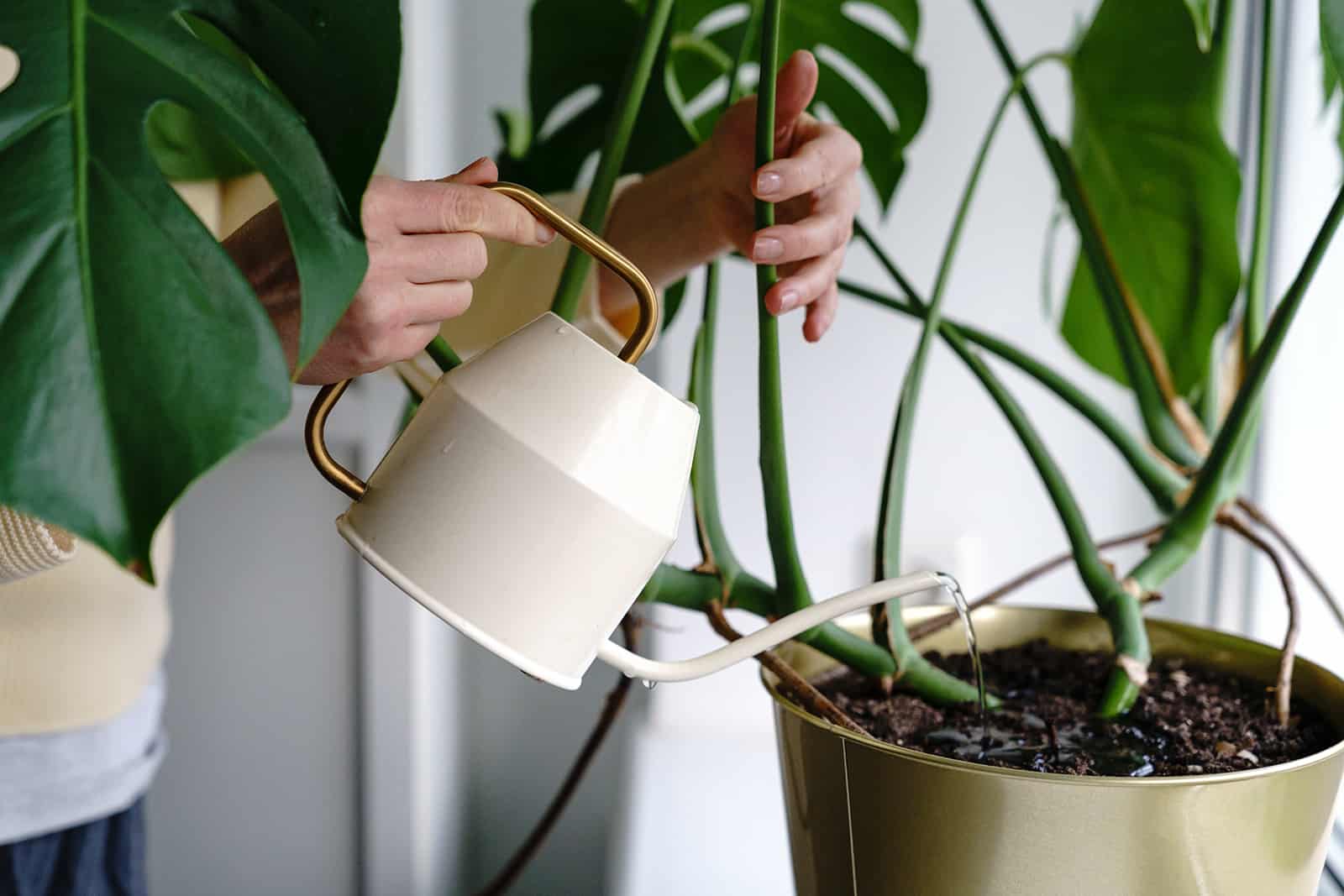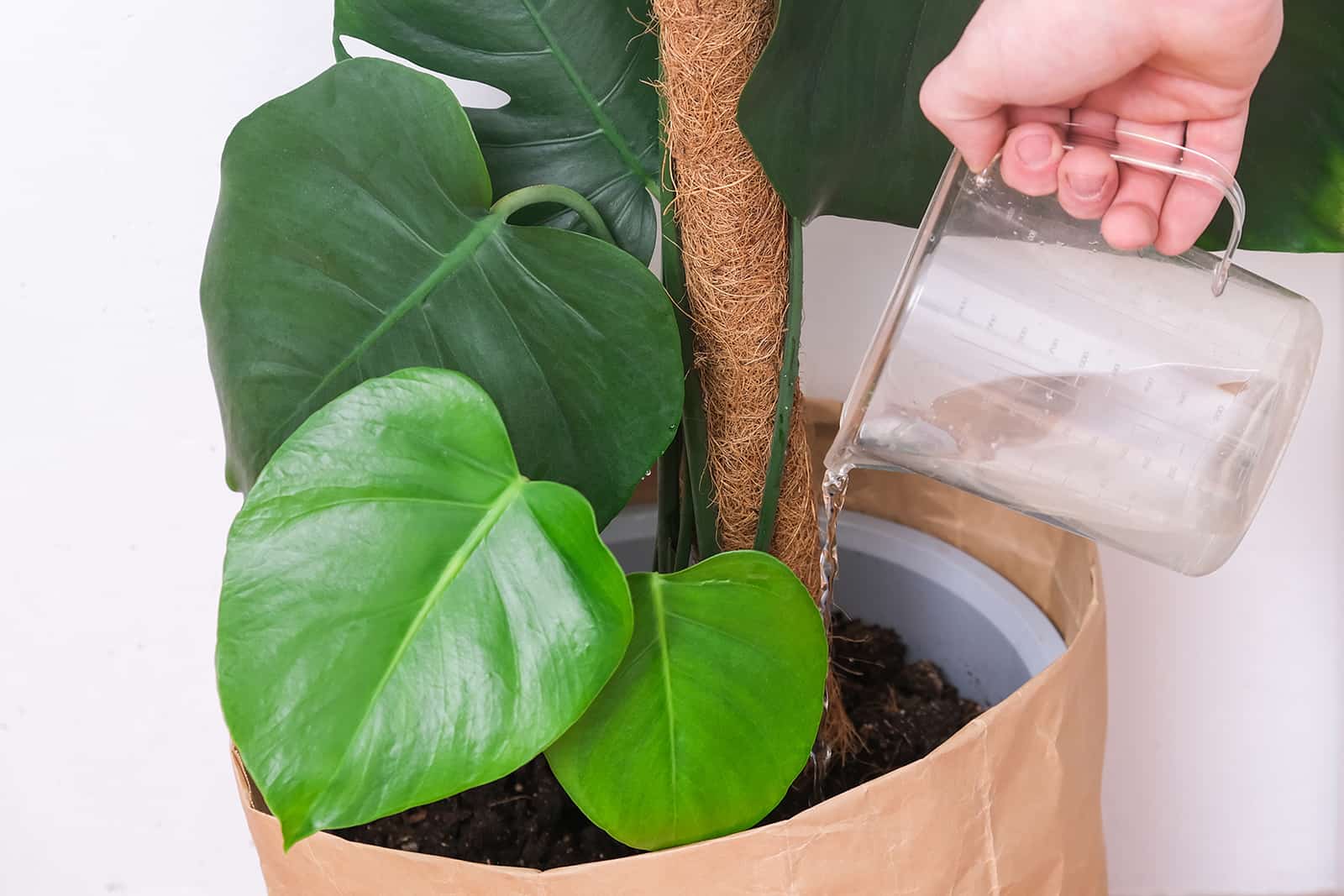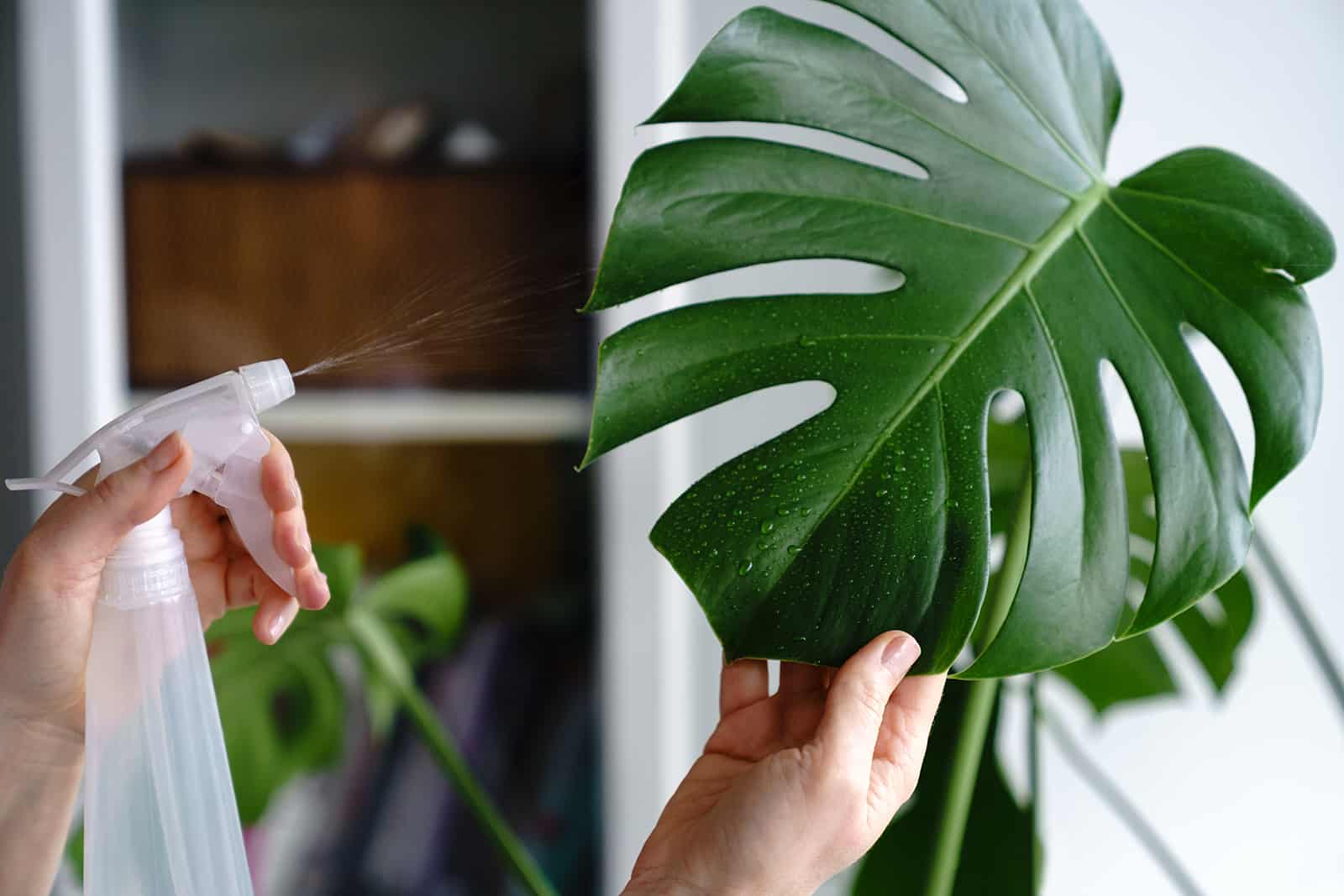Positive Bloom is an Amazon Associate and we earn from qualifying purchases through these links at no extra cost to you.
All houseplants have one thing in common: they are sensitive to watering. Monstera plants are particularly sensitive as they are so susceptible to overwatering. To make matters worse, they can also easily be underwatered.
This is because the Monstera Deliciosa is native to the tropical parts of South And Central America. You may think this means it requires more water, but they are actually prone to overwatering because in their natural habitat they are protected by trees.
Consequently, owners wait too long to water Monstera and eventually the plant dehydrates.
That’s the reason watering is quite tricky when it comes to this plant.
Sometimes it may be hard for you to determine if your Monstera is overwatered or underwatered.
However, there are a few signs of an underwatered Monstera. If you notice dry soil, discoloration or curling of the leaves, slower growth, or the entire plant leaning over, your Monstera is likely underwatered.
I know how stressful it can be to see your plant suffering, so I want to show you how to save your Monstera, what you should aim for when it comes to watering, and how to care for this plant in general.
Let’s dive right in!
Signs Of An Underwatered Monstera
If you notice that your Monstera soil is dry, you should inspect the other parts of the plant.
Monstera leaves turning brown or yellow, curling, or not developing fenestrations, are the second clear sign that your plant is thirsty.
If left untreated, your Monstera will grow slower and eventually lean over.
Let’s get into details!
Dry Soil
When it comes to Monstera soil, it’s essential to let it dry between waterings. The problem arises when we wait for too long. A Monstera will not appreciate being left in dry conditions.
If your Monstera lacks water, it won’t die straight away. However, it will likely affect the growth rate.
Sometimes the topsoil may seem dry, but the Monstera doesn’t actually need watering. This is why it’s so crucial to check deeper into the soil to see if you’re dealing with an underwatered plant.
The easiest way to check if Monstera soil is dry is by putting your finger about an inch into it. If your finger has no soil on it when you pull it back out, your plant needs watering.
Monstera Leaves Turning Brown Or Yellow
Leaves turning brown or yellow is another sign of underwatering. The roots of the Swiss Cheese plant uptake nutrients from the soil and transfer them to the leaves. A plant needs watering to get these nutrients.
If you don’t provide your Monstera with enough water, it will suffer from nutrient deficiency. Instead of waxy and green leaves, they will be discolored.
The problem with yellow leaves is that you must be very careful when you spot one, as there are many causes of yellowing.
Yellowing can result from overwatering, lack of sun exposure, or pest infestation.
The number of leaves suffering from discoloration will tell you if the problem is more serious. For example, if you only have a couple of yellow leaves, they could be older leaves that are most likely dead. If everything else is alright with your Monstera, don’t worry about a few yellow leaves.
However, you should react quickly if the yellowing is followed by wilting or drooping.
Also, if your Monstera’s new leaves lack Iron, Copper, or Magnesium, they’ll turn yellow.
The edges of the leaves can be crispy to touch if lacking these nutrients.
You’ll also need to check the soil. Your Monstera is thirsty either way, so it’s important to react in time.
Curling Or Drooping Leaves
Leaf curling is one of the main indications of underwatering.
How does it happen?
When Monstera leaves lack water, they reduce their surface area to prevent water loss. Pretty clever, right?
Don’t worry, this won’t last forever as long as you react in time.
I find this feature fascinating as the Monstera plant is trying its best to survive.
Before you do any watering, always check the soil. Leaves curling or wilting can have other causes, and you don’t want to water already watered soil. This is dangerous as you may overwater your Monstera and hurt it even more.
No Fenestrations
Mature Monsteras develop fenestrations, or holes on the leaves. If this doesn’t happen, you Monstera is lacking something.
For example, if the plant doesn’t receive enough sunlight it may stop developing fenestrations. Put your Monstera in bright indirect light if you suspect lighting may be the problem.
Swiss Cheese plants need 6 to 12 hours of sunlight daily.
Also check the soil if lighting isn’t the problem. There’s a nice hack when it comes to watering and lighting: place your plant in bright indirect light and set yourself a reminder to water it. Checking the soil regularly will help you find the perfect watering schedule.
Stunted Growth
There’s an important thing to know about these plants before you conclude your Monstera is growing slower than usual because of underwatering, which is that Monstera plants go through a dormancy period during winter.
A Monstera doesn’t grow actively during dormancy, so it looks like it has stunted growth.
However, if your Monstera doesn’t continue to grow for a while after its dormancy period is over, you should check if the plant is lacking water.
If you forget to fertilize your Swiss Cheese plants or don’t water them enough, these plants will start showing signs of underwatering.
As well as dormancy, underwatering can also be mistaken for a plant not getting sufficient light. This means you’ll have to observe your plant closely to conclude what’s causing the issues.
Monstera Leaning Over
If you notice the Monstera leaves drooping and leaning to one side, you should check the water supply.
Droopy leaves can be spotted easily on younger plants, but when Monstera’s mature the limp leaves will be accompanied by the entire plant leaning to one side.
How To Revive An Underwatered Monstera Plant
After you’ve concluded that your Monstera is lacking water, it’s time to do something about it.
First, check the severity of the issue. The drier the soil, the more water it’ll need. Why is this important? Well, if all the soil is dry, you’ll need more water.
If only the topsoil is dry, you have to be careful as it won’t need a lot of water and the plant is in danger of becoming overwatered.
Let’s find out what to do and how to keep your Monstera healthy!
Give Your Monstera A Good Soak
Your thirsty Monstera needs a good drink! You can use a sink by lowering the plant into it and letting the water do the rest. You can also use a watering can.
Make sure the pot has drainage holes, pour gradually, and don’t use all the water you prepared at once. You don’t want the Monstera soil to become waterlogged. Pour the water onto the Monstera soil and make sure it doesn’t touch the leaves.
Continue until you see water coming out of the drainage holes.
After you are done soaking, empty the drainage tray immediately.
Your Monstera now needs time to drain. Never leave a watered plant exposed to direct sunlight while draining as it will cause irreparable damage.
Use New Soil Mix
If the soil goes without enough water for an extended period, its structure might suffer damage. I suggest you prepare a fresh soil mix, preferably with materials that retain water, but not for too long as it may end up causing damage to the plant’s roots.
Prepare soil mix that contains:
• 1/3 peat moss
• 1/3 vermiculite
• 1/3 perlite
This combination of materials will improve drainage to prevent overwatering, and also retain water so your Monstera can recover.
There’s one disadvantage of this soil mix, which is that it doesn’t contain all the nutrients your Monstera needs, so make sure to fertilize your plant. Apply fertilizer every time you water to prevent nutrient deficiency from affecting your precious Monstera plant.
Repot Your Monstera
After your Monstera gets the drink it needs and you prepare the appropriate soil mix, it’s time to repot!
You don’t have to prepare the soil mix yourself. You can purchase it from a local store, but I suggest you make your own, especially if you want to grow more plants. It’s essential to learn the materials required for potting mixes to fulfill the needs of all plants.
When repotting your Monstera, you must first prepare a new pot. I suggest going for one 1-2 inches larger. If you decide to use the old pot, remove the old soil and sterilize it. Sterilization is essential as you need to avoid transferring any potential diseases to your Monstera. The pot should have drainage holes to help the soil get rid of excess water.
It’s also important to shake off the old soil from the roots.
Take 1/3 of your new potting mix and put it in the pot. Place your Monstera in the middle and then fill the pot with the remaining potting mix.
It’s essential to water your Monstera every time you repot it.
That’s it! Just stick to your usual plant care routine and everything should be fine.
Overwatering vs Underwatering
Now you know what underwatering is and how your Monstera responds to it. However, sometimes it’s hard to determine whether your Monstera is lacking water or if it has been overwatered.
Look for signs of overwatering if you suspect the changes to your plant were caused by too much water.
How To Identify An Overwatered Monstera Deliciosa
There are a few telltale signs of an overwatered Monstera Deliciosa. It can be hazardous and fatal if you don’t react as soon as you spot the following symptoms:
| Signs Of Overwatering | Causes |
|---|---|
| Black Or Brown Patches On The Leaves | If excess water stays in the pot for too long, the air spaces within the Monstera soil will get clogged. The oxygen won’t reach the roots and they will suffocate and rot. They will be prevented from sending nutrients to the leaves, resulting in black or brown patches. |
| Moldy soil | If the soil remains in water for an extended period, you will end up with soggy soil that has a moldy appearance. Waterlogged soil makes plants more susceptible to pathogens, mainly fungi. Fungi will kill your Monstera if left untreated. |
| Foul odor | This is the worst consequence of overwatering! I think you can work out why. If the smell of the soil is really unpleasant, the root system needs further observation. |
| Root Rot | Changes to the leaves and wet soil with an unpleasant smell demand urgent inspection of the roots. Take your Deliciosa out of the pot and see if there are discolored roots. Black or brown mushy roots instead of grayish-white ones means that your Monstera is suffering from root rot. |
| Edema | If you spot yellowish bumps or blisters on the leaves of your Monstera, the cells of the plant have collapsed due to overwatering. Luckily, edema can’t spread to other houseplants |
How To Tell If Your Swiss Chinese Plant Needs To Be Watered
Before you plan the watering schedule for your Monstera, it’s important to know how to tell if it needs to be watered.
Finger/wooden stick method
The best way to check soil moisture is by simply putting your finger in the soil. If the topsoil is dry about an inch down, your Monstera Deliciosa is lacking water. If the potting soil is wet, your Monstera has had too much water.
You can also insert a wooden stick into the soil, and if it has lumps of soil attached it means the soil is too wet and needs to dry. On the other hand, if there’s nothing on the wooden stick, you might need to recheck your watering schedule.
However, you can’t always rely on these two methods, especially if you’re a beginner at growing plants.
Fortunately, there’s a device you can use to help you decide.
Moisture meter
If you’re unsure about soil testing techniques, you can purchase a moisture meter. A great thing about this device is that it can be used for outdoor soil.
When I was a beginner, I used my moisture meter to measure moisture levels. Over time, you’ll learn so much about soil that you won’t need guides like these anymore.
Luckily, some devices can measure moisture, pH, and many other things, so I suggest investing in one.
Here’s what I’d get if I were you:
• Multifunctional
• Easy to read and use
• Portable
• Accurate
Lifting The Pot
The pot of your Monstera can also tell you if it’s time for watering. The weight of the pot to be precise.
This method is mainly used for checking the water supply of smaller plants (trust me, you don’t want to lift a 6 foot Philodendron pot!).
There’s a difference in pot weight between watered Monstera soil and soil that doesn’t have enough water.
Therefore, the heavier the pot, the longer you should wait to water your Monstera.
Over time, it’ll be pretty easy to determine what the watering schedule should be with this method.
Drooping Or Curling Leaves
Luckily, your Monstera will tell you if you have waited too long for watering.
Drooping or curling leaves in the early stages aren’t dangerous, but actually somewhat helpful.
If you water your plant as soon as you spot them, it won’t suffer any damage.
Some Monstera’s leaves will wilt in order to sacrifice themselves and give the other leaves more water.
However, the leaves will reduce their surface area to save enough water from photosynthesizing.
Lower Leaves Yellowing
Well-draining soil is crucial for all houseplants. The lower leaves of your Monstera are the first to warn you that the plant doesn’t need more water.
If you notice the lower leaves turning yellow, delay watering for a while. Always prune yellow and dead leaves.
How To Water Monstera Plants
Although it may sound unimportant, how you water your Monstera plays a significant role.
You can either water your Monstera from the top or apply bottom watering.
Let’s see which is better!
Top Watering
If you decide to apply the top watering method, first prepare a watering can with a long neck.
Pour the water gradually and evenly until you see it coming out of the drainage holes.
If your Monstera pot isn’t placed on a water tray or saucer, take the plant’s pot to the sink.
Wait for about 15 minutes until all the excess water drains. This method can also be used to clean dusty Monstera leaves or remove pests. Be sure to leave the plant to drain well, or else it may suffer damage.
Pros: It’s easy and less messy. It also allows mineral salts to deposit from fertilizer.
Cons: Encourages fungus and pests in the soil. Water may not reach every part of the root system, particularly the bottom of the pot. The soil can become too compact to lose its structure and damage the plant.
Bottom Watering
If you decide to apply the bottom watering method, you’ll have to use a basin or sink. Place your Monstera in a basin or sink and fill it with water until half the pot is submerged.
Wait for about 30 minutes until the roots and soil have soaked and absorbed nutrients.
Put your finger in the soil to see if the water has come to the top. Take the pot out of the sink and wait for about 15 minutes, or until all excess water drains from the soil.
Pros: Promotes root growth as Monstera roots extend to reach the water. The moisture is evenly distributed, so there’s no danger of overwatering the leaves.
Cons: Messy and not suitable for larger plants. It takes more time and won’t let the mineral salts from fertilizer deposit well.
Common Watering Mistakes
Watering is quite tricky, so it’s common to make some mistakes at first. For example, adding too much or too little water, or using the wrong type of water.
There are also problems when sticking to a watering schedule and ignoring different conditions.
Let’s find out more!
Wrong Type Of Water
If you use tap water for your Monstera, there are a few important things to know.
Sometimes tap water contains high levels of chloramines or fluoride.
If you notice dark brown spots on your Swiss Cheese plant’s leaves, you might want to change the type of water you’re using.
However, if you continue using tap water, leave it overnight to sit.
I use rainwater or distilled water for my Monsteras.
Incorrect Amount Of Water
Light watering and indoor plants aren’t compatible. If you see that your plant needs water, water it thoroughly. If you don’t give it enough water per watering, the chances for dehydration increase.
Incorrect Conditions
Light, temperature, and humidity play a significant role in watering.
Your Monstera should be placed in bright indirect light. This way, you can be consistent in watering and won’t have much trouble.
Monstera’s water needs change if they don’t get enough light. You will have to water more if you can’t find a place where the plant can receive enough indirect sunlight. Remember that Monsteras grow under a rainforest canopy and don’t receive full sun.
Monsteras need more water during summer as they are actively growing in higher temperatures.
If you’re watering your plant often and the humidity is high, you may actually be underwatering your Monstera.
On the other hand, if the place you keep your Monstera has low humidity and you are watering it often, it can easily become overwatered.
Use a humidifier to control the humidity level and ensure it meets the Monstera’s requirements.
Relying On Watering Schedule Too Much
This is actually where we make the most mistakes.
For example, if you conclude that your Monstera needs to be watered once a week, don’t set a reminder to water it on the same date.
The potting soil will tell you if the plant needs water, and it may be more or less than every week. The watering needs of a plant’s soil can change for many reasons, so sticking to one watering schedule may not be the best idea.
Wrapping Up
Like most other houseplants, Monsteras are tropical plants. Their watering needs change based on the conditions they’re provided.
If the conditions aren’t similar to those of their native habitat, watering can become really tricky.
Dry soil, discoloration of the leaves, wilting, and drooping are telltale signs of an underwatered Monstera.
Use our advice to revive the plant and our tips for watering, and you won’t have to worry ever again.
Until next time!
Like this post? Share or pin it for later!

